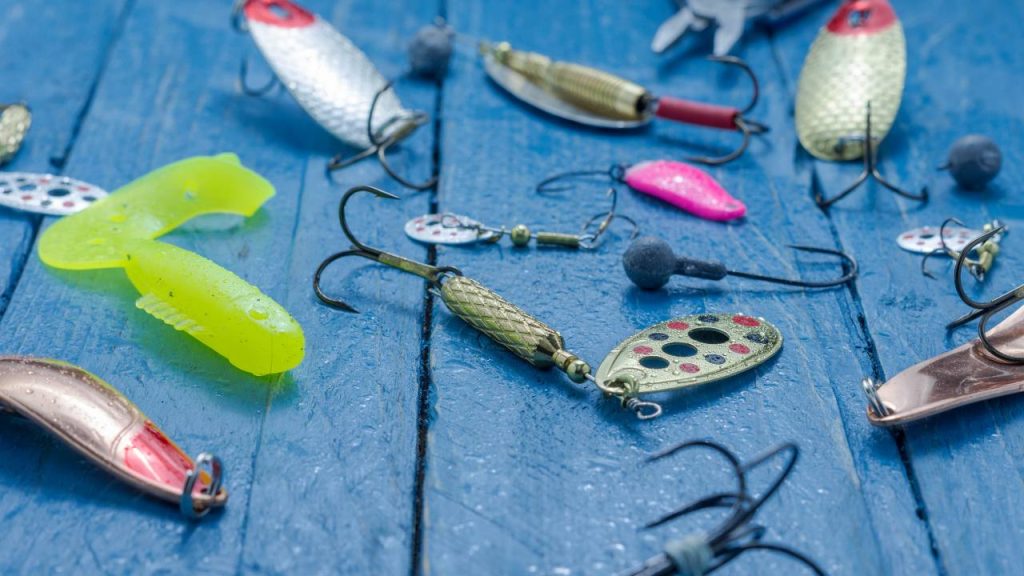For many anglers, saltwater fishing represents the pinnacle of the sport. The prospect of doing battle with powerful species like redfish, snook, and tarpon is an alluring one.
But transitioning from fresh to salt, or taking up saltwater fishing as a total beginner, can be daunting. With hundreds of potential species, massive bodies of water, and so many factors impacting fish behavior, it’s tough to know where to start.
Luckily, there are some tried and true tips from seasoned saltwater anglers that can help you get up to speed quickly.
In this complete guide, you’ll learn essential saltwater fishing tips, the gear you need to get started, the best baits and lures to use, where to find fish, and key strategies to catch more of them. Let’s jump in!
Getting Started: Licenses, Regulations and Safety
Before wetting a line, every angler needs to know the rules and exercise smart safety practices. Here are a few pointers:
- Obtain a fishing license – Fishing licenses fund fisheries conservation and are legally required. Licenses can be purchased online or at bait shops and tackle retailers.
- Learn local regulations – Every state sets its own size, season and bag limits. Research the regulations for species you plan to target.
- File a float plan – Let someone know where and when you plan to fish in case an emergency arises.
- Watch the weather – Don’t take chances fishing in potentially dangerous seas or storms. Check forecasts and radar before heading out.
- Wear a PFD – Accidents happen quickly on the water. Always wear a properly fitted life jacket.
Okay, now that the essentials are covered, let’s get to the fun stuff – how to actually find and catch fish!
Saltwater Fishing Tip #1: Target Specific Species
It may be tempting as a beginner to simply toss out a line with hopes of catching “anything that bites.” But taking a more strategic approach and targeting particular species will lead to far more success.
Why? There are a few reasons:
- Fish have very specific habitat and feeding preferences. What attracts trout is different from what attracts redfish. You can more easily identify productive spots, depths, baits and lures if you know your target species.
- Fishing strategies and rigging varies by species. The way you fish for bottom-dwelling flounder is totally different from how you fish for surface-feeding Spanish mackerel, for example.
- Gear needs change by species. The rod, reel, line and terminal tackle best suited for chasing snook is overkill for inshore trout.
Rather than choose a random spot and hope for the best, experienced anglers first decide what species they want to target. Then they undertake research to learn as much about their feeding behaviors, habitat and capture techniques as possible.
Saltwater Fishing Tip #2: Match Your Gear to the Fish
Having rods, reels, and lines well-matched to the size of fish you’re pursuing makes fighting and landing them much easier. Using gear that’s far too heavy or too light can make for a less exciting battle. Something that’s seriously underpowered also risks getting spooled or broken.
As a rule of thumb for beginners, a 7-foot medium power rod paired with a 4000-5000 size spinning reel and 20-30 lb braided line makes a versatile inshore setup. You can fish for everything from speckled trout to mid-sized redfish with an outfit like this. Targeting bull reds over 50 pounds or offshore species will call for heavier gear.
Don’t cheap out completely, but also don’t feel like you need the most expensive gear right away. There are very capable combos available for under $100 to get started. Upgrading to better-performing (and pricier) gear is something you can consider after some experience.

Saltwater Fishing Tip #3: Increase Your Odds with Live Bait
Many seasoned saltwater anglers will agree that live or natural baits almost always out-produce artificial lures – especially for beginners. The reason is simple: predator fish find the movement and appearance of live shrimp, baitfish, and other natural baits irresistible.
Common live bait options include:
- Live shrimp – The quintessential saltwater bait, shrimp catch a huge variety of inshore species. Hook them through the horn or tail.
- Minnows – Small baitfish like finger mullet, pilchards, and anchovies mimic the forage fish predators feed on.
- Pinfish – A favorite bait in Florida, the spiny pinfish is abundant and catches big gamefish.
- Crabs – Fiddler and blue crabs work well, especially for sheepshead, black drum, and redfish.
- Sand fleas – These small crustaceans work well for pompano, whiting, and other bottom feeders.
Tip: Keep bait alive and lively using a quality aerated livewell or bucket with an aerator. This keeps them friskier and more appealing to predators. Change water frequently.
While live bait certainly stacks the odds in your favor, lures can be a blast and allow you to cover more water in search of fish. We’ll get into some top lure choices shortly.
Saltwater Fishing Tip #4: Understand Conditions That Impact Fishing
In saltwater, environmental variables truly impact fish behavior, location, and feeding. The more you learn to use conditions to your advantage, the more successful you’ll become. Some key factors include:
- Wind – Wind direction and intensity influence prey availability, currents, and wave action. In general, lighter winds from the east or south are favorable.
- Tides – Fish tend to feed most actively during tidal changes when baitfish are in flux. Major lunar feedings also enhance bite windows.
- Water temperature – Warming water kickstarts metabolic rates. Look for temps above 55°F for the best action.
- Time of day – Fish often feed most actively in low light around dawn and dusk.
- Barometric pressure – Drops in air pressure from frontal systems often enhance the bite.
Paying attention to the marine forecast, tracking tide and moon phases, and understanding seasonal patterns go a long way in saltwater fishing. Fish when multiple positive conditions align to have the odds heavily in your favor.
Saltwater Fishing Tip #5: Fish the Right Areas and Structure
One universal truth in all fishing – fresh and saltwater – is that finding and targeting areas that hold baitfish and provide ambush spots for predators is key. Saltwater fish aren’t evenly distributed – they congregate in areas that meet their needs.
Some examples of promising spots and structures to look for include:
- Jetties and piers – Structure that disrupts currents attract baitfish that gamefish feed on. Always a go-to starting point.
- Drop-offs and ledges – Transition zones and depth changes provide cover and ambush points for predators.
- Flats and grass beds – Shallow flats with grass and sand provide habitat and holding areas, especially on tidal coasts. Target edges and potholes.
- Inlets and passes – High flows of current and bait pouring around inlets are saltwater fish highways.
- Wrecks and reefs – Both natural and artificial reefs hold tremendous amounts of marine life. Fish the upcurrent and downcurrent sides.
- Docks and pilings – Look for docks, oyster beds, and structures in estuaries and backwaters.
Identifying the intersecting points of things like current flows, structure, and drop-offs is key to finding saltwater fish. Local knowledge helps immensely – use tackle shops, guides, and experienced anglers as information resources when venturing somewhere new.
Top Lures and Baits for Beginners
Now that you know how to find fish, let’s look at some all-star bait and lure choices that all saltwater rookies should have on hand:

Top Plug and Stickbait Lures
- Mirrorlure MirrOdine – This suspending twitch bait produces explosive strikes from gamefish like redfish, trout, and snook. Easy to work with a deadly action.
- Heddon Zara Spook – One of the most iconic saltwater surface lures, this walk-the-dog topwater plug draws some incredible blow-ups. Deadly for big trout.
- Yo-Zuri Crystal Minnow – This floating/suspending minnow bait casts like a bullet and has an enticing rolling action. Great for everything from Spanish mackerel to cobia.
- Rapala X-Rap – A proven baitfish imitator that casts far and dives down to 8+ feet, allowing you to search various depths. Killer for stripers, bluefish, and more.
Best Jigs, Soft Plastics and Spoons
- Spro Bucktail Jigs – A classic offshore jig that works amazing for species like cobia, bluefish, stripers and tuna. Match with soft plastic trailers.
- Paddle tail swimbaits – Paddle tails on a lead jig head give an enticing kick and vibration. Great for imitating baitfish. Work them on or near the bottom.
- Berkley Gulp! – Gulp baits are infused with scent attractants – almost like fishing live bait. The Swimming Mullet and Jerk Shads are especially effective.
- Johnson Sprite Spoon – Cast and retrieve this flashy spoon over reefs and structure to catch everything from Spanish mackerel to bluefish. Simply great at drawing strikes.
- Clark Spoon – More durable than many metal spoons, Clark Spoons have heavier action on the drop and provoke reaction bites from gamefish.
Live Bait All-Stars
- Shrimp – No saltwater bait bucket is complete without fresh shrimp. Hook them through the tail for a natural presentation.
- Squid – Cut squid strips flutter temptingly with great attraction through the water column. Chum with them too.
- Mullet – A highly prevalent forage fish. Use a small finger mullet or cut strips of a larger mullet.
- Menhaden – Pogies, bunker, and fatback are just a few names for these oily baitfish that gamefish love to feed on.
- Crabs – Fiddlers, blue crabs, and sand fleas (a crab relative) all make great bait for bottom feeders like sheepshead.
Matching your bait or lures to the forage fish and behaviors of your target species will drastically improve your catch rates. Don’t be afraid to experiment to see what they respond to in your area.
Beginner Saltwater Fishing Techniques
Once you’ve got the right gear, and bait and found some promising spots, executing the proper fishing techniques is next. Here are some beginner techniques for both casting lures and fishing with live/dead bait:
- Topwater walking – For surface lures like Zara Spooks, work the rod tip to make the bait “walk” left to right. The pause in between walks triggers explosive strikes.
- Jigging – Whether vertical jigging or casting jigs, the goal is to imitate an injured baitfish. Vary retrieves with a combination of lifts, drops and pauses.
- Twitching – When fishing minnow baits, give occasional twitches during the retrieve to mimic struggling prey. Allow lures to pause and suspend between twitches.
- Trolling – Let out lures or bait 100-200 yards behind a slowly moving boat to cover large areas to find fish. Use planer boards to spread out multiple lines.
- Drift fishing – Allow wind and currents to naturally move the boat while vertically jigging or fishing bait on the bottom. Bridge pilings, channel edges and reefs work well.
- Popping corks – Popping floats act as both a bobber and surface splasher to attract fish to baits like live shrimp. Give occasional pops to create commotion.
Take advantage of any available structure by casting parallel to the edges. And make sure to vary retrieves until you discern the speed and action fish prefer each day. Patience and persistence are key virtues every angler must develop.
Be Flexible, Experiment Often, and Keep Learning
One of the greatest joys of saltwater fishing is that there is always more to learn. Be flexible in your approach and experiment with different techniques, areas, times, baits, and more to see what works best. Observe other anglers you meet and pepper them with questions – most will happily share tips with newcomers to the sport.
Read fishing forums and reports to stay on top of trends in your area. Don’t get discouraged – there will be plenty of tough days before you unlock the secrets to more consistent success. But embrace the journey, and you’ll gain skills and knowledge with each trip.
Hopefully, these essential tips help shorten the learning curve. Always exercise good stewardship and care for the fisheries that provide us with so much enjoyment. With preparation, responsibility, and persistence, you’ll be reeling in gorgeous saltwater fish before you know it. Good luck out there, tight lines!

Robert Coleman, in one word is a multitasker. He enthusiastically works as an outdoor guide. He also has led large groups for backpacking at Bogota in Columbia. Hours of research and field experiences have helped him to stand as one of the best professional reviewers for anything related to outdoors. He improvises in using the right tool rather than packing tons of unnecessary things while outdoors.









Leave a Comment